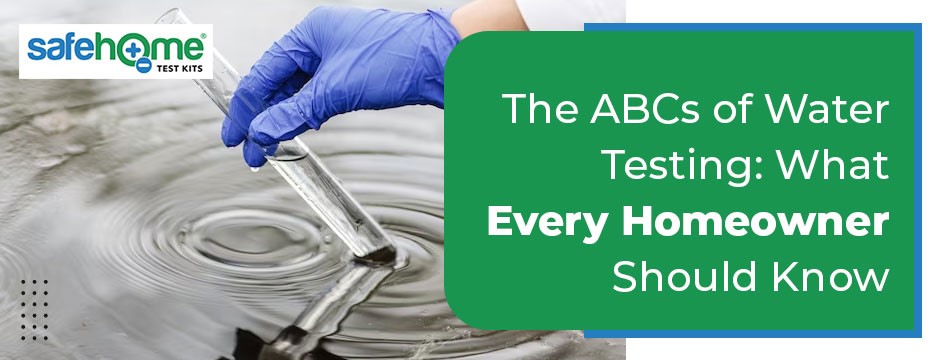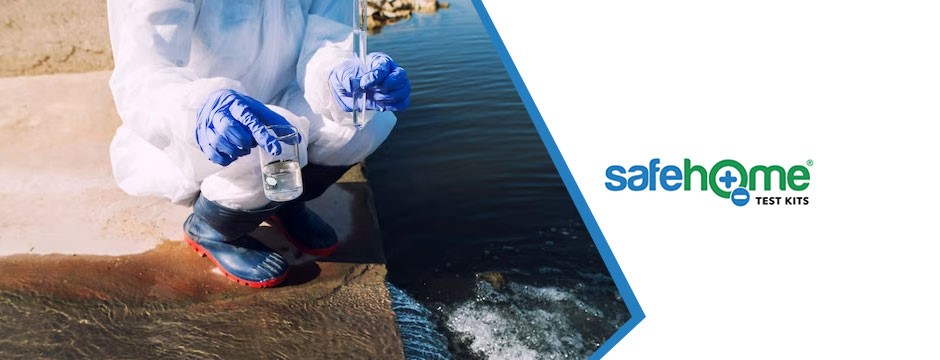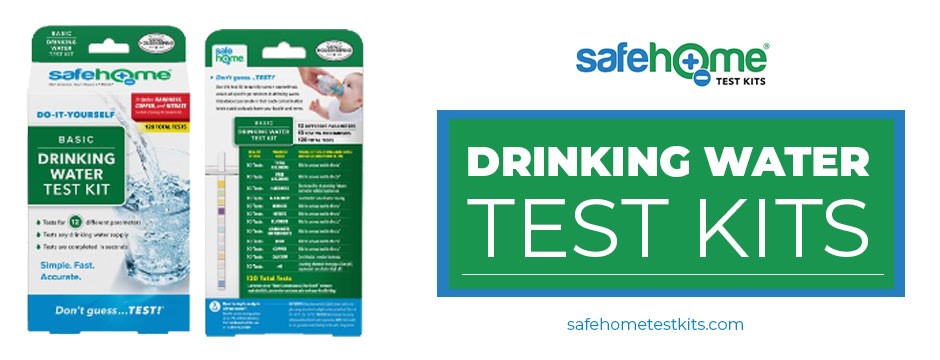The ABCs of Water Testing: What Every Homeowner Should Know

Water is one of the most essential elements of our daily lives. It quenches our thirst, helps us stay clean, and nourishes our plants and gardens. However, it’s not just enough to have water flowing from your taps; it’s equally important to ensure that the water you and your family consume is safe and clean. Water quality can vary greatly, and understanding the ABCs of water testing is crucial for every homeowner. In this comprehensive guide, we will delve into the importance of water testing, the types of contaminants to look out for, and how to conduct water testing to ensure the safety of your household.
Why Water Testing Matters
Water is often called the “elixir of life,” and for good reason. It is crucial for our survival, and the quality of the water we consume has a direct impact on our health. Clean and safe water is not just a matter of convenience; it’s a fundamental requirement for a healthy and happy life.
Contaminated water can carry various health risks. Bacteria, viruses, and parasites in water can cause gastrointestinal illnesses, while exposure to certain chemicals and heavy metals can lead to long-term health problems. Moreover, water quality can change over time due to various factors, including natural processes and human activities, making regular water testing essential to ensure the ongoing safety of your water supply.
Common Water Contaminants
Understanding the potential contaminants that can be found in water is crucial for homeowners. Here are some common water contaminants to be aware of:
- Microorganisms and pathogens: These include bacteria, viruses, and parasites like E. coli, Giardia, and Cryptosporidium. They can cause diarrhea, cholera, and other waterborne diseases.
- Chemical contaminants: These may include pesticides, herbicides, industrial chemicals, and pharmaceuticals. Exposure to these substances can have adverse health effects, especially over prolonged periods.
- Heavy metals: Lead, arsenic, mercury, and cadmium are examples of heavy metals that can leach into water sources. Long-term exposure to heavy metals can lead to neurological and developmental issues, among other health problems.
- Radon: This naturally occurring radioactive gas can seep into groundwater and, when inhaled, may increase the risk of lung cancer.
Testing Your Water
Water testing is analyzing a water sample to determine its quality and the presence of contaminants. There are two primary methods for testing water: DIY water testing kits and professional water testing services.
- DIY water testing kits: These kits are readily available and are a cost-effective way to get an initial idea of your water quality. They typically provide results for a limited number of parameters, such as pH, hardness, chlorine, and certain contaminants. While useful for basic testing, they may only cover part of the spectrum of potential water quality issues.
- Hiring a professional water testing service: For a more comprehensive assessment of your water quality, it’s advisable to enlist the services of a professional water testing lab. They can provide a thorough analysis of your water, testing for a wide range of contaminants and ensuring accurate results.
When deciding between the two options, it’s essential to consider the specific needs and concerns of your household. If you suspect severe water quality issues or if your water comes from a private well, professional testing is strongly recommended. If you’re using a municipal water supply and want a quick overview of your water quality, a DIY testing kit can be a good starting point.
Interpreting Water Test Results
Once you have the results of your water test, you’ll need to interpret them to understand your water quality. Test results typically include measurements of various parameters, such as pH, total dissolved solids (TDS), and concentrations of specific contaminants. Safe levels for these parameters can vary depending on local regulations and health guidelines.
Here are some key water quality parameters and what they indicate:
- pH: pH measures the acidity or alkalinity of water. A pH of 7 is considered neutral. Values below 7 indicate acidic water, while values above 7 indicate alkaline water. Extreme pH levels can affect the taste of water and the efficiency of water treatment systems.
- TDS: Total dissolved solids represent the concentration of inorganic and organic substances in water. High TDS levels may affect the taste and appearance of water, but they are not always indicative of health risks.
- Bacteria and pathogens: The presence of these microorganisms in water is a cause for concern. The test results will indicate the presence or absence of harmful microorganisms.
- Chemical contaminants: The concentration of various chemicals, such as chlorine, nitrates, and volatile organic compounds (VOCs), will be provided. It’s important to compare these levels with local safety standards.
- Heavy metals: Test results will show the concentrations of heavy metals like lead, arsenic, and mercury. Even trace amounts of these metals can pose health risks, so it’s crucial to adhere to recommended limits.

Addressing Water Quality Issues
If your water test results indicate the presence of contaminants or other water quality issues, there are several steps you can take to address the situation:
- Water treatment options: Depending on the specific contaminants found in your water, you may need to invest in water treatment systems. Common options include water filters, reverse osmosis systems, water softeners, and UV sterilization. The treatment method choice should be based on the nature of the contaminants and your budget.
- Maintenance and prevention: Regular maintenance of water treatment systems is essential to ensure their effectiveness. Additionally, preventive measures such as regularly testing your water, practicing proper well maintenance (if applicable), and following water conservation practices can help maintain water quality.
It’s important to consult with water quality professionals when choosing a treatment system and developing a maintenance plan to address your specific water quality issues effectively.
Gain Peace of Mind with Safe Home® Test Kits
Safe Home® is your trusted partner in ensuring the safety and quality of your home’s water supply. We understand the importance of clean and safe water, which is why we offer a range of comprehensive test kits designed to uncover potential contaminants and environmental threats in your home. With our Safe Home® test kits, you can gain peace of mind knowing that every corner of your home has been screened for potential hazards.
Drinking Water Test Kits: Assessing Your Water Supply
Our Safe Home® drinking water test kits are designed to assess the quality of your home’s water supply. These kits allow you to uncover the level of contamination from up to 200 different parameters, ensuring you have all the answers you need to protect your health and well-being.
At Safe Home®, we take pride in offering at-home and in-lab drinking water test kits, allowing you to choose the testing method that suits your preferences and needs.

Safe Home® - Accurate, Reliable, and Easy to Use
We understand that accuracy and reliability are paramount in water testing. That’s why we’ve gone the extra mile to ensure that our testing process is not only accurate and reliable but also easy to use. Whether you conduct the test yourself or let our experts handle it, you can trust Safe Home® for accurate results.
You Test It, or We Test It: Flexible Options for Accurate Results
Safe Home® provides you with two flexible options to obtain accurate water test results:
- DIY At-Home Test Kits: If you prefer a hands-on approach and want immediate results in the comfort of your home, our DIY at-home test kits are the ideal choice. With easy-to-follow instructions, you can collect samples, conduct the test, and receive results within seconds.
- DIY In-Lab Test Kits: For those who seek a more comprehensive analysis, our DIY in-lab test kits are the solution. Collect a water sample and send it to our EPA-certified laboratory. Once complete, we will provide a detailed report of our findings online, ensuring you have a comprehensive understanding of your water quality.
Get Your Results and Find Answers to Your Questions
Whether you choose to handle the tests yourself or have us perform them, getting your results is a straightforward process with Safe Home®:
- DIY At-Home Test Kits: Expect the most results within seconds. We understand the importance of quick answers, and our user-friendly kits are designed to provide immediate information.
- DIY In-Lab Test Kits: If you prefer our experts to handle the testing, we’ll deliver your results in just a few business days. We take pride in our efficient process to ensure you receive accurate results promptly.
In either case, if your test results reveal parameters that indicate contamination levels, Safe Home® is here to provide you with the knowledge and guidance you need to take action.
Conclusion
Ensuring the safety and quality of your household’s water supply is a fundamental responsibility for homeowners. Water testing is the first step in achieving this goal, and understanding the ABCs of water testing is crucial. Regular testing, interpretation of results, and the implementation of appropriate treatment measures are essential to safeguard your family’s health and well-being.
By staying informed about common water contaminants, testing your water using reliable methods, and taking action to address water quality issues, you can enjoy the peace of mind that comes with knowing your household’s water is clean, safe, and refreshing. Remember, water is life, and taking care of your water quality is taking care of your family’s health.


